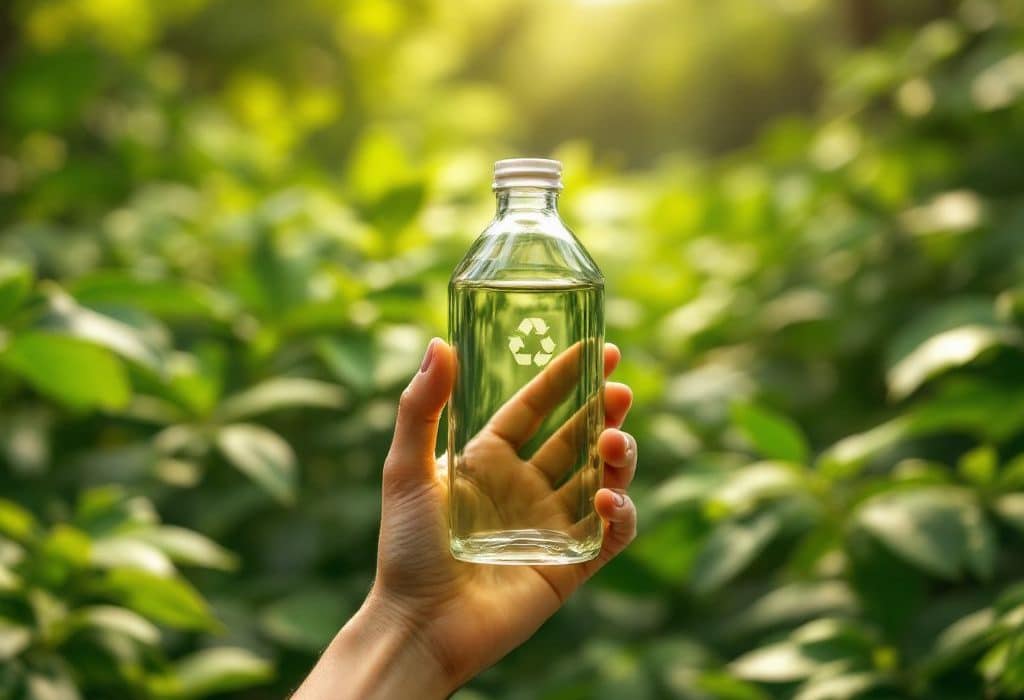Sustainable beauty has increasingly become a focal point for both consumers and brands seeking to minimize environmental impact while promoting health and ethical responsibility. Let’s delve into the core aspects that define sustainable beauty: environmental impact of products, ethical ingredient sourcing, and sustainable practices used in manufacturing.
<strong>Environmental Impact
Environmental impact within the beauty industry revolves primarily around carbon footprint, water usage, and waste production. Brands like RMS Beauty are leading the way by utilizing renewable energy sources and prioritizing minimal water use in their production processes. Products are packaged in recyclable aluminum and glass, reducing reliance on single-use plastics that contribute significantly to landfill waste.

Ingredients Sourcingstrong>
Ethically sourcing ingredients involves selecting raw materials that are sustainably farmed, promote biodiversity, and support fair trade practices. Biossance exemplifies these standards with its use of sugarcane-derived squalane, which offers a renewable resource alternative to shark-derived squalene, traditionally used in moisturizers and other beauty products. Their commitment to offsetting the carbon footprint of their sugarcane cultivation underscores the integration of eco-conscious sourcing strategies.
Sustainable Practices

It’s critical for companies to embrace sustainable manufacturing practices, which include reducing emissions, reusing materials, and recycling waste. Lush Cosmetics is particularly noteworthy in this area, implementing a Naked product line which eliminates packaging altogether and employing in-store return programs aimed at reducing overall environmental burden. They hold stringent standards for ethical manufacturing and were among the pioneers in the zero-packaging movement.
Misconceptions in Sustainable Beauty
There are prevalent misconceptions surrounding what “green” and “natural” truly mean. A common assumption is that all natural ingredients are inherently sustainable; however, this is not always the case. For instance, palm oil, often considered a natural ingredient, can have devastating ecological effects when not sustainably farmed—contributing to deforestation and habitat loss for wildlife like orangutans. Sustainable brands ensure their palm oil is certified by the Roundtable on Sustainable Palm Oil (RSPO) or seek alternatives altogether.

Moreover, “chemical-free” branding often misleads consumers, as every substance is composed of chemicals, including water. Evidence-based claims and certifications—from EcoCert to USDA Organic—provide a factual foundation to determine a product’s sustainable credentials, distinguishing them from greenwashing attempts.
To truly engage in sustainable beauty, it’s essential to scrutinize brands with transparency in their supply chain and adherence to established sustainability benchmarks. By prioritizing products with credible certifications and recognizing the multifaceted approach required to lessen ecological impacts, consumers can support an industry geared towards meaningful environmental stewardship.
Frequently Asked Questions
What is a sustainable moisturizer?
A sustainable moisturizer is a skincare product made from natural and organic ingredients, such as plant oils, shea butter, and aloe vera, which are gentle on the skin and reduce the risk of allergic reactions. These products are also often packaged in biodegradable or recyclable materials to minimize environmental impact[5][1][3].
What are the benefits of using sustainable moisturizers?
The benefits of using sustainable moisturizers include being environment-friendly, good for your skin, and supporting ethical and fair trade practices. These moisturizers are made from natural ingredients that nourish and moisturize the skin without harmful chemicals. They also tend to be cost-effective in the long run because they last longer than traditional lotions[1][5][3].
How do sustainable moisturizers support ethical practices?
Sustainable moisturizers support ethical practices by ensuring that the ingredients are sourced through fair trade methods. This means that the workers involved in producing these ingredients are fairly compensated for their work, promoting equitable labor conditions[1][2].
What should I look for when choosing a sustainable moisturizer?
When choosing a sustainable moisturizer, look for products made from natural and organic ingredients, such as plant oils and aloe vera. Also, check if the packaging is biodegradable or recyclable. Ensure that the brand supports fair trade practices and uses renewable raw materials[5][1][3].
References- The Good Boutique: Sustainable Skincare: The Rise Of Eco-Friendly Lotions & Moisturisers.
- Greener Wisdom: Zero Waste Face Moisturizer: Some Sustainable Solutions.
- Acme-Hardesty: The Push for Sustainable Beauty | Benefits of Green Cosmetics.
- Play It Green: Sustainable Moisturiser: Cultivate Beauty, Preserve Nature.

